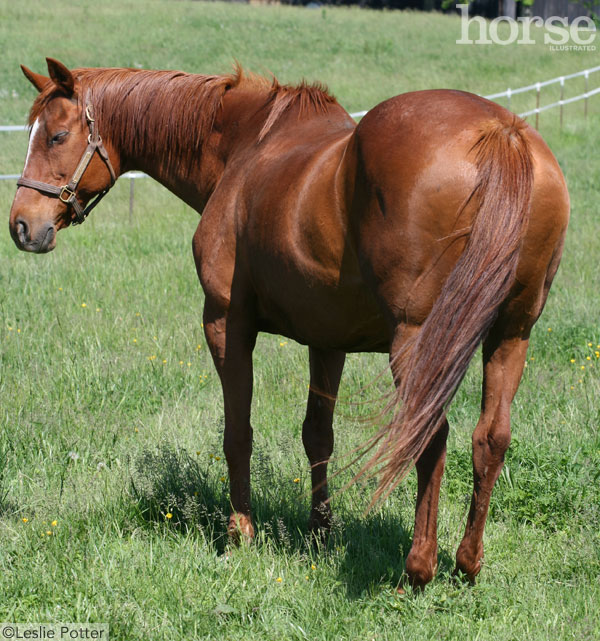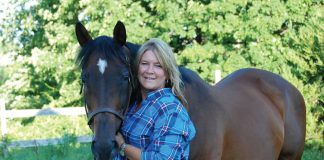Q: I just finished reading the article “Too Heavy to Ride?” and I have a question about rider weight in relation to back length. I read that back length affects a horse’s ability to carry more weight, and that shorter backs are better in this respect. However, my taller and heavier horses have longer backs than my shorter horses. I am concerned that back length and rider weight may contribute to a swayback in the future. Am I justified in my concern?

A: There have been a few studies and some unpublished data that came out of Sweden in the 1980s looking at back length in relation to back strength. They determined that horses with shorter backs have fewer back-related issues than those with longer backs. From an anatomical and mechanical standpoint, the strongest backs would be short, wide over the loin coupling, and deep from the loin to groin area.
Back length is measured as the distance from the top of the withers (T2-T3) to the lumbosacral joint. The horse has leg support at the front and rear of this back length. A horse is considered short-backed if his back length is less than one-third of his body length (measured from the point of shoulder to the point of buttock when the horse is standing square). The rider sits on the portion of the back that does not have any support (leg) below. Therefore, the shortness of this area where the rider sits will help the horse’s back from sagging under applied weight.
In the thoracic area, you have vertebrae, ribs, the sternum where the cranial ribs attach, ligaments and musculature to assist with weight carriage. When you look at the importance of loin width, strength comes from the lumbar span being short and wide with muscular support from the longissimus dorsi muscles along the dorsal surface of the back and psoas major and minor muscles on the underside of the vertebrae.
There are two types of swayback (lordosis) conditions: senile lordosis, a consequence of aging, and congenital lordosis, a hereditary thoracic vertebral bone deformity. There has not been any scientific research correlating back length to the development or increased risk of developing a swayback.
Because senile lordosis is caused by weakness and laxity of the supraspinous and other supporting ligaments along the spine, it may be plausible that horses with longer backs could be at greater risk of developing lordosis if other factors are also considered. These would include:
- lack of regular core building exercise;
- improper saddle fit;
- horse obesity; and
- rider weight and movement.
It is important to note that because the horse has an extremely rigid vertebral column, lordosis rarely causes pain, health problems or poor performance.
Liked this article? Here are others you’ll enjoy:
HorseChannel’s Guide to Equine Back Care
DEBRA POWELL, M.S., Ph.D., obtained her doctorate from the University of Kentucky in Equine Exercise Physiology and Nutrition. Since 1999, she has owned Powell’s Equine and Canine Therapeutic Services (PECTS) that specializes in non-invasive therapies and nutritional consulting. Learn more at www.hoofandpawtherapeutics.com.
This article originally appeared in the April 2014 issue of Horse Illustrated magazine. Click here to subscribe!






I have always heard that “short back” horse were better for gaming or rodeo sports.
It would be nice to see an illustration of what you were talking about here, because not everyone is familiar with the anatomy of a horse. “…the strongest backs would be short, wide over the loin coupling, and deep from the loin to groin area.”
Good to know.